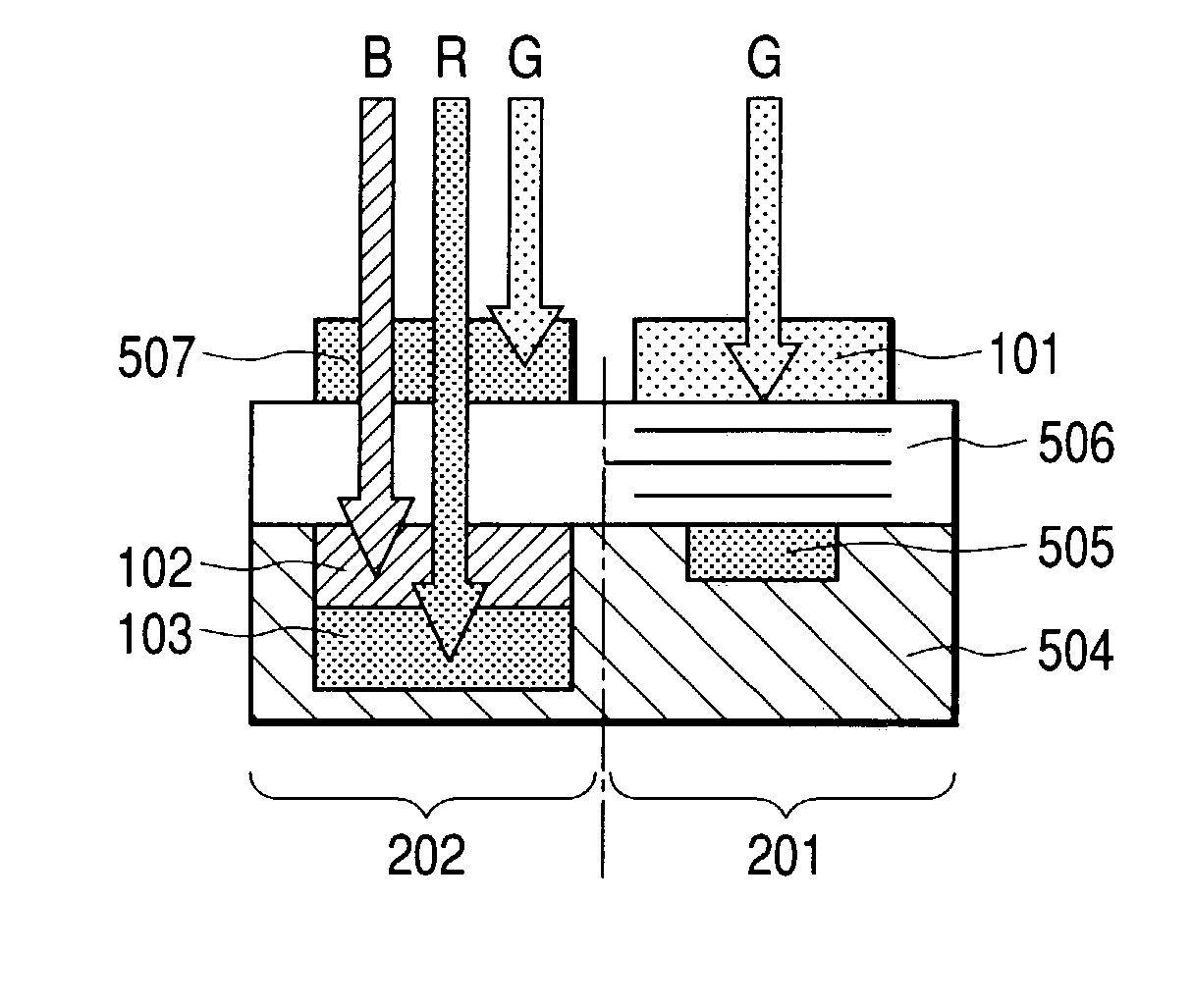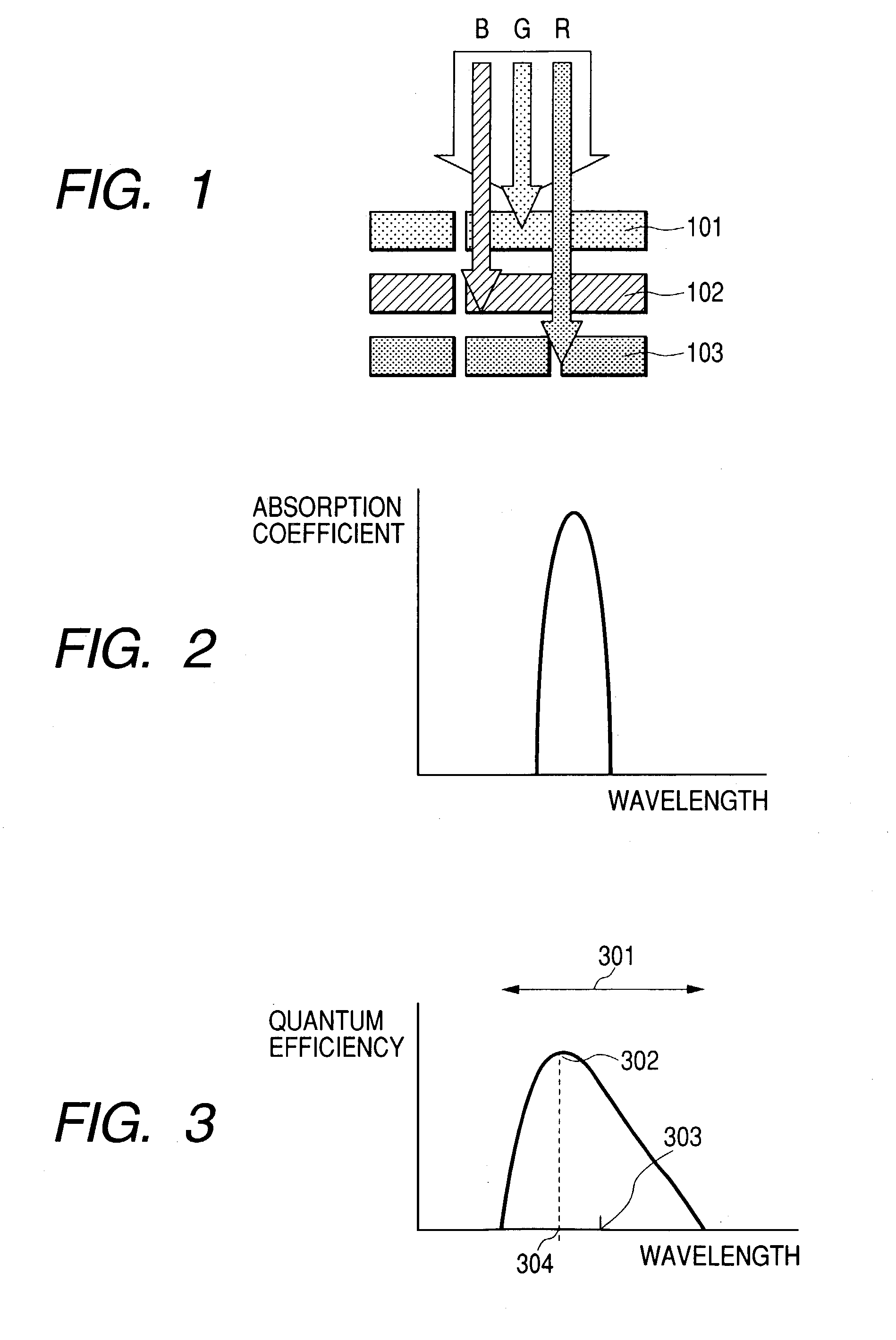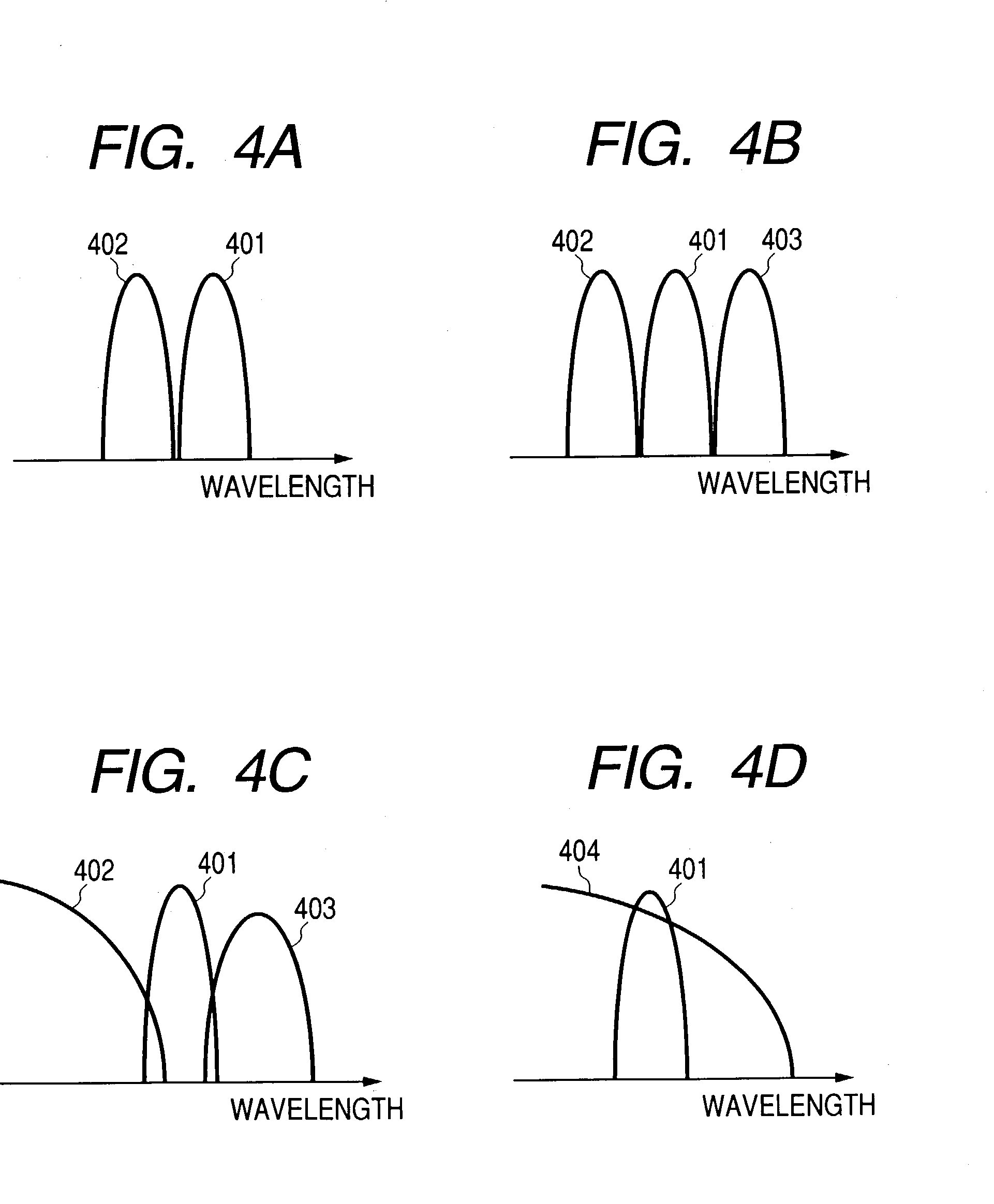Color image pickup device and color light-receiving device
a pickup device and color technology, applied in the field of color image pickup devices and light-receiving devices, can solve the problems of false color production, loss of light, and light amount decrease, and achieve the effect of high color separation capability and high sensitivity
- Summary
- Abstract
- Description
- Claims
- Application Information
AI Technical Summary
Benefits of technology
Problems solved by technology
Method used
Image
Examples
example 1
[0138]In this Example, the superiority of the image pickup device having a configuration shown in FIG. 1 was demonstrated by numerical estimation.
[0139]As shown in FIG. 1, the image pickup device is a stacked type image pickup device in which a light-receiving part 101 for detecting green light, a light-receiving part 102 for detecting blue light, and a light-receiving part 103 for detecting red light are stacked in this order. The light-receiving part constituted by an organic semiconductor having a peak of an absorption spectrum for green light is used, and light-receiving parts made of silicon for blue light and red light are used, as a model case. Blue light and red light are separated using a difference in absorption length in silicon.
[0140]In the configuration used here, the first light-receiving part corresponds to the green light-receiving part, and the second light-receiving part corresponds to the blue light-receiving part and the third light-receiving port corresponds to ...
example 3
[0162]In this Example, an organic light-receiving part for green light was used for the uppermost layer, an organic light-receiving part for blue light was used for the middle layer, and a light-receiving part made of silicon was used for the lowermost layer. The structure is shown in FIG. 15. For reading the signal, a CCD 1205 in a silicon substrate 1204 is used for blue and green as well as red. The CCD was an interline-type CCD.
[0163]First, based on the usual method of fabricating a CCD, a red light-receiving part 1203 and a charge transfer part were fabricated in the silicon substrate, and organic light-receiving devices for blue and green were stacked thereon in this order in the same manner as Example 2 to fabricate the CCD. DCM 1 was used for the light-receiving layer of blue light-receiving part 1202, and eosine Y was used for the green light-receiving layer 1201.
[0164]In the light-receiving part, a zinc oxide film with the thickness of 100 nm was formed by the spattering me...
example 4
[0167]This Example shows an example of a color line sensor, as shown in the outlined sectional view of the pixel area in FIG. 16, in which an organic light-receiving device 1101 for green light was placed as the uppermost layer, and a light-receiving part 1102 made of a-Si capable of performing color separation for blue and red by the absorption length, and further a TFT, capacitor or the like 1104 made of a-Si were placed as the lower layer on a glass substrate 1103.
[0168]First, a glass substrate having a TFT transistor made of amorphous Si (a-Si) was prepared. Subsequently, a p-i-n-i-p-type tandem a-Si light-receiving part was prepared. The thicknesses of their type layers were 80 nm, 700 nm, 180 nm, 90 nm and 10 nm in the order from the bottom layer. This a-Si light-receiving part is capable of making the switch between the reception of light in an upper pin part and the reception of light in a lower pin part by switching the voltage between +2.5 V and −2.5 V. The a-Si was formed...
PUM
 Login to View More
Login to View More Abstract
Description
Claims
Application Information
 Login to View More
Login to View More - R&D
- Intellectual Property
- Life Sciences
- Materials
- Tech Scout
- Unparalleled Data Quality
- Higher Quality Content
- 60% Fewer Hallucinations
Browse by: Latest US Patents, China's latest patents, Technical Efficacy Thesaurus, Application Domain, Technology Topic, Popular Technical Reports.
© 2025 PatSnap. All rights reserved.Legal|Privacy policy|Modern Slavery Act Transparency Statement|Sitemap|About US| Contact US: help@patsnap.com



